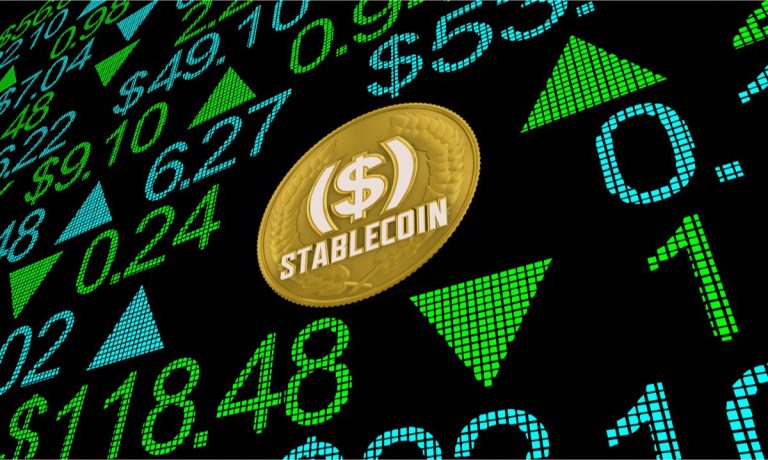
There are few segments of the cryptocurrency industry that get as much focus from policymakers as stablecoins.
Ever since Meta (then Facebook) panicked elected officials, central bankers and financial organizations from the G20 to the Financial Action Task Force (FATF) by announcing plans in June 2019 to launch a stablecoin that would be instantly available for payments to Facebook’s 2.3 billion users around the planet, dollar-pegged cryptocurrencies have been in the crosshairs.
In this second of a two-part series about the cases for and against stablecoins, we’ll be looking at the reasons why the panic — or at least the arguments surrounding it — was called for.
See also: A Better, Safer, More Innovative Payments Solution Than Bitcoin
To start, let’s be clear about what stablecoins are: cryptocurrency tokens intended to hold a steady, one-to-one peg with a fiat currency. For the vast majority of them, that’s the U.S. dollar. There are two basic ways of doing this. By far the most common is by backing them one-to-one with a cache of dollars or highly liquid investments that allow the issuers to redeem them on demand. This provides the investor the confidence needed to support the fixed price to within a few thousandths or ten-thousandths of a penny.
Read also: Why Stablecoins Are Surging
There are about $180 billion in stablecoins in circulation. Here is the damage their opponents fear they can do.
The Great Disruptor
Stablecoins aren’t just under attack. They’ve already lost some huge battles. And we’re not talking about Meta’s decision to walk away from the June 2019 Libra-turned-Diem stablecoin project, which, under its original name, set politicians, regulators, bankers, central bankers, the U.S. Treasury Department and other finance ministries, and organizations ranging from the G20 to the Bank for International Settlements (BIS) aflame.
India, Indonesia, Malaysia, Thailand and Turkey have all banned crypto as a means of payment. China was cracking down on it even before its total crypto ban. Despite “bitcoin” being thrown around a lot in these decisions, stablecoins were a big, big part of the reasoning. They are, after all, built specifically for payments. Other than acting as collateral, that’s effectively the only use stablecoins have.
See also: Ban in Thailand Adds to Growing Backlash Against Crypto Payments
The core argument on the finance side is threefold. First, stablecoins can compete with national fiat currencies, to disastrous effect. Second, they could accelerate economic downturns. Third, if they lose the confidence of the market, they could cause a substantial financial disruption all on their own.
Loss of Control
Stablecoins would make it easy to send money and make payments anywhere, virtually instantly and nearly free, without ever touching existing payments rails.
That sounds a lot like the pro-stablecoin argument, especially when it comes to cross-border transactions that can carry fees of 7% or more — a particularly ruinous cost in the remittances industry on which many of the poorest people in the world rely.
However, at scale, stablecoins could woo people away from national currencies, particularly in places where the currency or financial stability is weak. That would weaken them further in a vicious cycle.
“There is a risk that in periods of systemic stress, households and other agents may shift from bank deposits or other instruments into the [central bank digital currency (CBDC)], spurring a ‘digital run’ of unprecedented speed and scale,” the BIS said in an October report.
Of more concern to the economic powers that be in the U.S. and other major economies is that any loss of power over their currency would weaken the ability of central bankers to use traditional financial tools to fight off inflation and economic downturns.
Then there’s the non-U.S. argument, which focuses on the power the dollar wields as the world’s reserve currency. Nearly all stablecoins are pegged to and/or backed by dollars. If they become widely used as a peer-to-peer (P2P) currency for everyday needs, that would create a de facto dollar economy, which doesn’t sit well abroad.
Too Big to Fail
According to Department of the Treasury Under Secretary for Domestic Finance Nellie Liang, stablecoins have two main dangers: run risks and payment system risks.
“Run risk refers to the potential for a scenario in which a loss of confidence in a stablecoin sets off a wave of stablecoin redemptions,” she told the House Financial Service Committee in February.
Read more: US House Urged to Pass New Legislation on Stablecoins
If those stablecoins are backed not by fiat currency but other investments — like the No. 1 stablecoin, Tether, which has more than $81 billion USDT in circulation, only a small fraction of it in dollars — a loss of confidence could “be followed by distressed sales of the stablecoin’s reserve assets,” she said. “Such distressed sales of assets could negatively affect critical funding markets and broader financial conditions.”
Beyond that, privatizing money doesn’t have a history that inspires confidence. The U.S. free banking era, from 1837 to 1864, was marked by frequent runs on and collapses of banks that issued their own currencies.
Off the Rails
Payment system risks could lead to disruption of the mechanisms for storing or transferring value — the existing payments rails — which could hamper people’s ability to make payments, Liang said.
By moving people — and the money — outside of the traditional banking system, you also eliminate many regulatory tools that rely on middlemen to look for everything from money laundering to fraud.
Beyond that, you move money out of the traditional economy, and pull out liquidity. Every $1 stablecoin kept in a digital wallet is $1 less in a bank account that can be loaned out to boost the economy. It’s also $1 tied up in the cache of currency backing the stablecoin that cannot be loaned out.
That’s why the central bank digital currencies (CBDCs) under discussion generally default to keeping both large and small banks in the distribution loop.